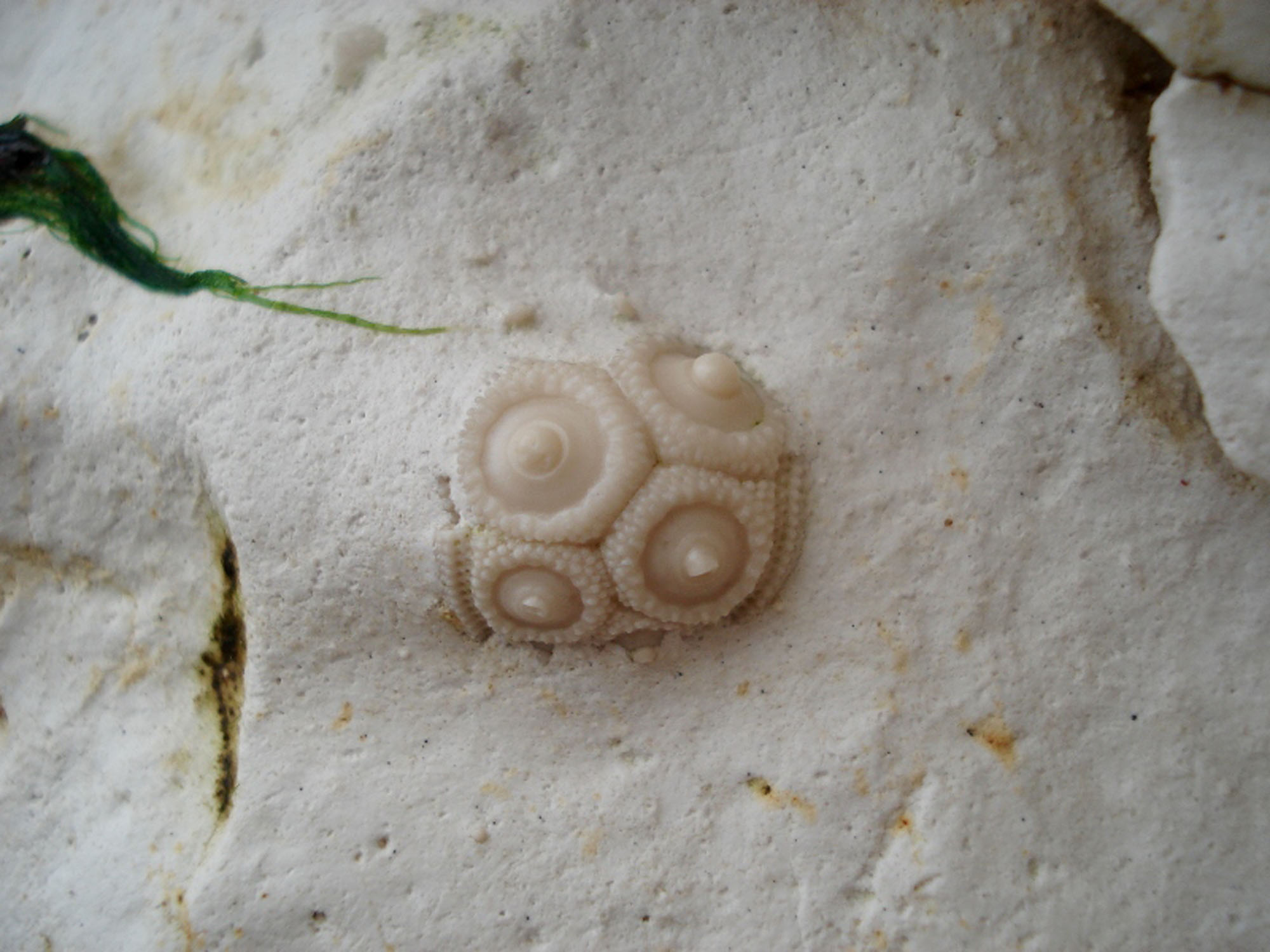This is a popular location for families and dog walkers. The chalk on the foreshore and any fallen boulders or cobbles can be investigated for fossils. Although finds are fairly plentiful, they are often broken.
DIRECTIONS
♦ Park on Marine Drive, off of Kingsgate Avenue and Percy Avenue. There is plenty of free parking at the top of the cliff.
♦ There is a short path here down to the beach, at the north-western end of the road.
♦ Follow this path down to the beach by means of a slope and steps and slowly work your way east, while fossil hunting on the foreshore.
♦ Ref: 51.38782°N, 1.43884°E
PROFILE INFO
FIND FREQUENCY: ♦♦ – On a good day, numerous well-preserved echinoid (sea urchin) fossils can be found at Kingsgate. There are also bivalves, brachiopods, belemnites, crinoid pieces, fish remains and more to collect. However (and unfortunately), on a bad day you can come away with very little.
CHILDREN: ♦♦♦♦♦ – This is a beach location frequented by families and dog walkers. Most of the beach is sandy, with areas of flint and chalk exposed lower down towards the waterline. Therefore, this location is very suitable for families.
ACCESS: ♦♦♦♦ – There is plenty of free parking at the top of the cliff and it is a fairly short walk down to the beach by means of a slope and some steps. Once on the beach, walking is easy in most areas.
TYPE: – Fossils can be found in the chalk on the foreshore and also within boulders and cobbles on the beach. However, the cliffs should be avoided as they can be dangerous.
FOSSIL HUNTING
There is productive collecting from the foreshore where you access the beach, to the arch to the east and beyond. However, collecting must be carried out at or near to low tide to ensure that the chalk wave cut platform is accessible. In areas not covered by weed or sediment, look out for echinoids, bivalves, belemnites and sponges. It is likely that you will encounter many partial examples before you find a whole one.
Near the arch, there was a cliff fall during the summer 2008, debris from which may still be around. Within the boulders and cobbles from this fall, good echinoid specimens have been found, as well as plentiful pieces of Marsupitescrinoids.
There is productive collecting from the foreshore where you access the beach, to the arch to the east and beyond. However, collecting must be carried out at or near to low tide to ensure that the chalk wave cut platform is accessible. In areas not covered by weed or sediment, look out for echinoids, bivalves, belemnites and sponges. It is likely that you will encounter many partial examples before you find a whole one.
Near the arch, there was a cliff fall during the summer 2008, debris from which may still be around. Within the boulders and cobbles from this fall, good echinoid specimens have been found, as well as plentiful pieces of Marsupitescrinoids. In some places, there are accumulations of flint pebbles. With patience, fossils can also be found among these. The cliffs contain fossils also but should be avoided because they are subject to falls and can therefore be dangerous.

GEOLOGY
At Kingsgate, the Upper Cretaceous chalk is Santonian in age, from the White Chalk Subgroup (Margate Chalk Member, part of the Newhaven Chalk Formation). This is marl-free, smooth white chalk, with little flint, and with a wonderful section of iron-stained sponges from Barrois’ Sponge Bed.

SAFETY
Common sense when collecting at all locations should always be used and you should check tide times before visiting. Keep a safe distance from the cliffs. In some places, weed on the foreshore makes it slippery. It is also possible to become cut off by the tide, so make sure you collect on a retreating tide. And make sure someone knows where you have gone and what time you expect to be back.
EQUIPMENT
A good, sturdy bag and plenty of packing material, as well as a hammer and chisel, are needed at this location. Waterproof boots with a good grip will also come in handy.
ACCESS RIGHTS
This site is a site of special scientific interest (SSSI). This means you can visit the site, but hammering the bedrock is not permitted. For full information about the reasons for the status of the site and restrictions, download the PDF from Natural England.
It is important to follow our ‘Code of Conduct’ when collecting fossils or visiting any site. Please also read our ‘Terms and Conditions‘
LINKS
♦ Buy Fossils, Crystals, Tools
♦ Location Discussions
♦ Deposits Magazine
♦ Join Fossil Hunts
♦ UK Fossils Network




























